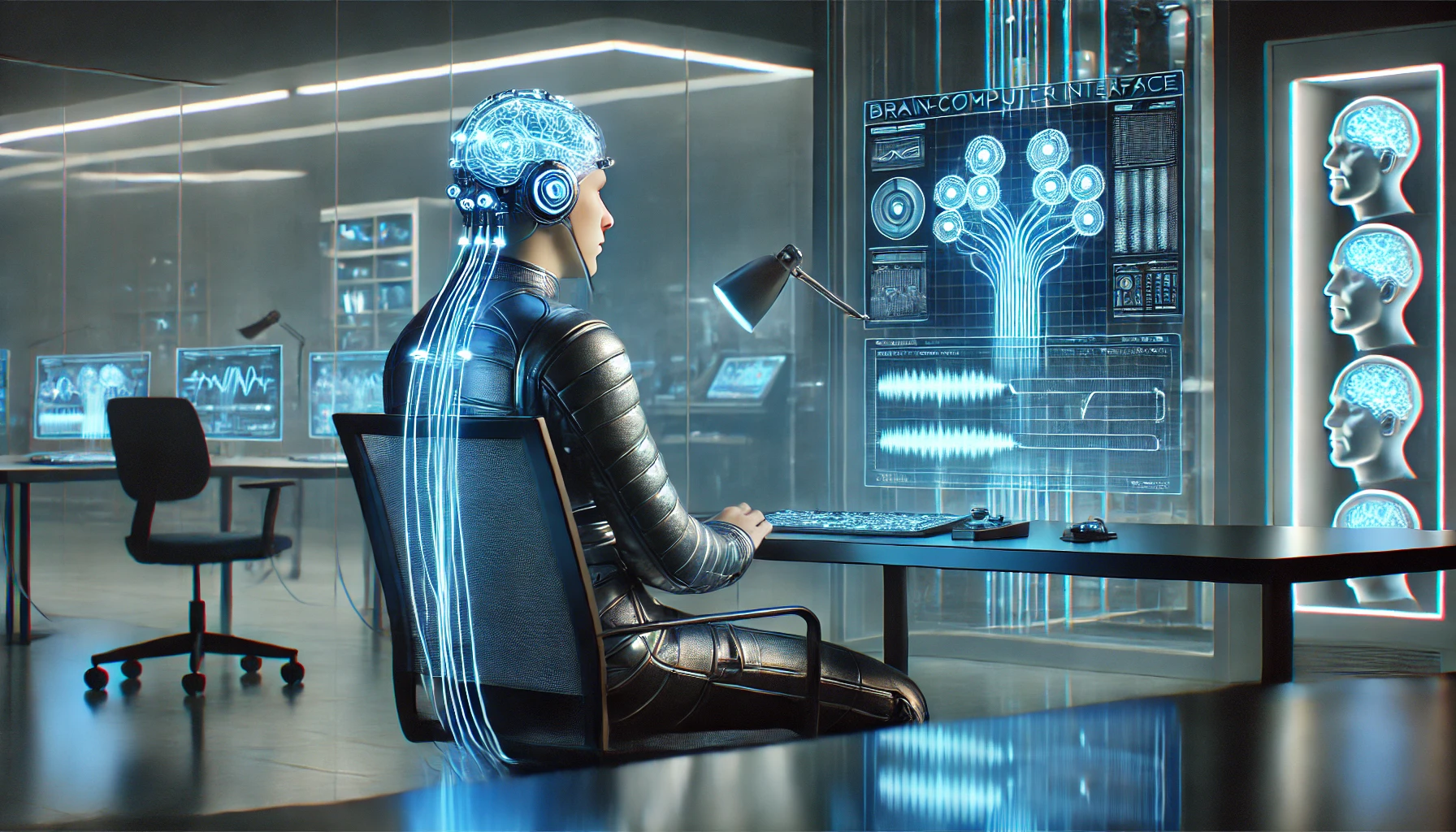
Ever wondered if we’re on the edge of a world where thoughts alone could move a robotic arm—or perhaps compose a digital message without a single keystroke? In many ways, that once-fantastical future is already creeping into our lives, thanks to Brain-Computer Interfaces (BCIs). From controlling prosthetics to revealing insights into locked-in syndromes, BCIs straddle the boundary of science fiction and everyday medical innovation.
At the dawn of 2025, these neural technologies are accelerating in development, spurred by government programs, private tech giants, and an entire generation of curious minds. So let’s dive into the swirling complexities of neuroscience and find out how BCIs could transform our relationship with technology—and possibly even ourselves.
Why Brain-Computer Interfaces Matter
It might seem like we’re being nudged toward a new species of human-tech hybrids—but let’s dial down the drama and break it down. Brain-Computer Interfaces function by picking up electrical signals from the brain (or sometimes deeper neural structures) and translating them into digital commands. This can be as simple as moving a cursor on a screen or as complex as controlling a bionic limb with near-lifelike precision.
Yet, there’s more to BCIs than flashy demos. Below are just a few reasons this field has captured global attention:
- Medical Breakthroughs
Individuals with paralysis or neuromuscular disorders often struggle to communicate or perform daily tasks. BCIs open fresh possibilities for them to operate wheelchairs, type messages, and even regain partial independence. - Cognitive Enhancement
Some researchers believe BCIs may soon provide ways to augment memory and learning, potentially revolutionizing how we study, work, or store knowledge. - Human-Machine Collaboration
As robotics and artificial intelligence become more sophisticated, we crave more intuitive ways to interact with them. BCIs could pave the way for seamless communication between humans and machines, effectively merging our mental focus with computational strength.
If you want a more formal deep dive, check out the specialized collection of research at Frontiers in Human Neuroscience focusing on BCI advancements and their applications in rehabilitation and neurofeedback. Or, for a crisp historical overview, the Brain–Computer Interface Wikipedia page offers a timeline of key milestones.
Government Notes and Emerging Policies
What’s the role of governments in this rapidly evolving field? Plenty, as it turns out. National agencies around the globe are investing in both the theoretical science of neural data and practical solutions for healthcare. In the United States, the National Institutes of Health (NIH) and the Defense Advanced Research Projects Agency (DARPA) sponsor numerous BCI research grants. Some of these programs aim to help veterans with prosthetics, while others explore “brain telemetry” for more futuristic projects.
In Europe, governmental bodies are pushing for a strategic approach: ensuring any Brain-Computer Interface technology meets stringent data protection laws and upholds patient rights. Meanwhile, East Asian countries like Japan and South Korea are funneling funds into robotics labs that integrate BCIs into their advanced humanoid robots, effectively bridging cutting-edge neuroscience with mechanical design.
Still, not all officials sing the same tune. A smattering of policymakers highlight the potential risks: from privacy breaches (imagine if a BCI could reveal personal thoughts) to possible social inequalities, if only the wealthy can afford neural enhancements. The swirl of political debate might lead to new legislation in the near future, shaping how quickly BCIs move from labs to everyday life.
Political News: Tussles Over Neural Data
When we talk about the BCI sector in 2025, there’s no ignoring the clash of political ideologies. Some leaders highlight the economic and humanitarian gains—enhanced medical treatments, new industries, maybe a reduced burden on healthcare systems if we can restore function to people living with disabilities. Other politicians, however, issue cautionary statements about “mind-reading devices,” equating them to an Orwellian scenario where personal freedom is at stake.
A handful of governments have floated the idea of establishing a specialized “Neural Ethics Committee,” which would oversee ethical concerns surrounding BCI usage in commercial products. Meanwhile, certain lobbying groups are pressuring for the swift deployment of BCIs in defense sectors, from advanced pilot helmets to covert intelligence operations. Depending on your worldview, that might sound necessary—or terrifying.
These political back-and-forths can overshadow the more grounded day-to-day progress that labs achieve. Yet, they’re essential for shaping how society will handle the marvels and potential pitfalls of neural technology. After all, the invisible line between reading signals for medical benefit and snooping on cognitive patterns can become razor-thin when commercial and defense interests get involved.
Research Labs Pioneering the Field
Peek into a BCI research lab, and you’ll often find a dizzying array of electrodes, cables, and high-end computers analyzing brain signals. At some institutions, you might see “wet labs” where scientists cultivate neural cells. At others, contraptions that look like futuristic helmets line the shelves, equipped with EEG sensors ready to measure real-time brain activity.
A Few Noteworthy Labs and Projects
- Stanford Neural Prosthetics Laboratory (USA)
Known for its innovative designs that help paralyzed individuals type sentences or direct robotic arms solely through thought patterns. Their studies are frequently cited in PMC articles for demonstrating the capacity of intracortical electrodes to restore motor functions. - European Brain Initiative (EU)
This consortium includes labs from Germany, France, Spain, and beyond. They’re focusing on brain mapping with high-resolution imaging, then pairing that data with AI-driven BCIs that can interpret subtle neuronal shifts. - University of Tokyo’s Cybernetics Team (Japan)
Here, the emphasis is on melding BCIs with cutting-edge robotics, aiming to build exoskeletons controlled by thought signals. The synergy between robust engineering and advanced neuroscience sets a high bar for the rest of the world.
Intriguingly, ResearchGate and other academic networks host the latest preprints on BCI breakthroughs, including real-time language processing and sub-dermal electrode implants that require minimal invasive surgery. This is a field where the academic, medical, and tech communities converge daily, each layer adding a new dimension to what BCIs can accomplish.
Celebrity Endorsements and Media Buzz
It might sound surprising, but big Hollywood names have begun championing Brain-Computer Interface research. Actor and activist Leonardo DiCaprio praised the potential for BCIs to create “a more inclusive world, where disabilities don’t limit communication.” Meanwhile, Tesla and SpaceX CEO Elon Musk has famously propelled the idea that BCIs could help humans keep pace with AI—a concept his startup Neuralink has tested in animal models.
Not everyone is equally convinced. Some celebrities worry about the risk of turning humans into “software upgrades,” losing personal authenticity along the way. However, when A-listers speak up—even if their tone sometimes veers dramatic—the ripple effect can attract fresh venture capital for BCI startups, push legislative debates forward, and spark mainstream curiosity.
On social media, supporters trumpet a future where you can compose music straight from your imagination or share thoughts telepathically with loved ones. Detractors respond with cautionary tales of dystopian mind control. Either way, the star-studded interest ensures BCIs remain in the pop-culture spotlight.
Perspectives of the Older Generation
You might imagine older folks dismissing BCIs as futuristic babble. But interestingly, many seniors show supportive curiosity. For those who’ve dealt with decades of hearing loss, limited mobility, or the onset of neurological conditions like Parkinson’s disease, the idea of bridging neural signals to an external device can be downright empowering.
At local community centers, older adults sometimes gather for small presentations by neuroscientists. A speaker might demonstrate how an EEG-based interface can let a stroke survivor regain partial control of an electric wheelchair. And the crowd? They’re often amazed, peppering the experts with questions: “So does the device read your mind?” or “If my neighbor used this, would we share brain signals?” The line between wonder and skepticism is fuzzy.
Nevertheless, a growing portion of older individuals champion careful adoption. In their view, if BCIs offer a genuine chance at independence—like the ability to communicate beyond the confines of a degenerative disease—it’s a gift worth pursuing. Yet, some express concern over cost and accessibility: “This technology better not be just for the wealthy.” Their worry is that these life-changing innovations might remain out of reach for those on fixed incomes.
Youthful Enthusiasm and Entrepreneurial Sparks
Step onto a university campus or tech conference, and you’ll sense the electric excitement swirling around Brain-Computer Interfaces. Students in engineering, medicine, computer science—even philosophy—flock to BCI hackathons. They tinker with do-it-yourself kits that measure brainwaves, exploring everything from gaming applications (like controlling a drone with concentration) to spinoff projects in mental health diagnostics.
For many in Gen Z, the synergy between the human mind and technology is the ultimate dream, transcending classic boundaries. They bandy about phrases like “cognitive doping” to describe potential enhancements in memory or attention, unafraid of the ethical grey zones that older generations shy from. In fact, they often see BCIs as a natural extension of the digital revolution, part of a continuum that began with smartphones and wearables.
However, there’s also a rebellious undercurrent—some younger voices protest hyper-commercialization. They fear corporations might commodify neural data for targeted marketing or even nudge behaviors. In other words, the youth perspective is a kaleidoscope of pure excitement, creativity, and a healthy dash of caution about who holds the keys to our mental kingdom.
Global Business Impact and Potential Revenues
Where medical and consumer tech converge, money tends to follow. The Brain-Computer Interface market is on the rise, with investors pumping billions into startups that promise everything from mind-controlled prosthetics to immersive VR experiences powered by neural signals. According to some analyses, total BCI-related earnings could reach double-digit billions by the early 2030s, a projection bolstered by major venture capital firms.
- Healthcare Applications: Assistive devices for patients with motor impairments, or even “smart rehab” solutions for stroke survivors, are likely to see robust growth. Insurance companies may gradually warm up to these technologies if data prove their long-term benefits and cost-effectiveness.
- Consumer Electronics: Some developers dream of a day when you can scroll through social media with a mere flicker of thought. While mainstream adoption may hinge on user comfort and privacy assurances, big tech sees a goldmine if they can deliver a safe, user-friendly BCI.
- Enterprise and Defense: Corporations might use BCIs for workforce training (think advanced simulations or mental skill-building), and defense agencies already explore soldier exoskeletons that respond to neural cues.
However, with great revenue potential comes the risk of corporate exploitation. A startup chasing profits might push half-baked products to market, overshadowing cautionary steps. This tension between innovation and regulation calls for watchful eyes—particularly as governments craft policies around data ownership and consumer protection.
Ethical Quagmires: Melding Mind and Machine
Whenever technology nudges against the very definition of human identity, robust ethical debate ensues. In the realm of Brain-Computer Interfaces, concerns revolve around privacy, autonomy, and mental “hacking.” Could unscrupulous individuals intercept neural signals or manipulate them? Let’s not forget that today’s data breaches typically involve credit cards, but tomorrow’s could revolve around brain-pattern data.
Data Ownership: Suppose a BCI logs your neural patterns over time—who owns that data? The individual user? The device manufacturer? Or maybe the healthcare provider? Various legal frameworks propose different answers, but none yet have the full force of global consensus.
Informed Consent: Ensuring users truly understand the capabilities and limitations of BCI systems is tricky. If you can’t physically speak or type, does that hamper your ability to consent to invasive electrode procedures?
Equal Access: If BCIs become as ubiquitous as smartphones, will they also exacerbate existing social inequalities? In a scenario where mental “uplinks” give well-funded individuals a competitive edge, that might leave entire demographics behind.
Academics from top institutions frequently convene at conferences—like the International BCI Summit—to wrestle with these dilemmas. Their consensus? The technology’s promise is exciting, but we must tread carefully to preserve human dignity and prevent a “mental gold rush” that bulldozes over privacy and ethics.
Shifting Narratives and Creative Possibilities
Let’s shift gears for a moment. Beyond the obvious medical uses and potential ethical pitfalls, BCIs could spawn entirely new cultural expressions. Imagine:
- Artistic Collaboration: Musicians jamming with AI-based instruments that respond to brainwave rhythms. Painted art produced by direct neural impulses, capturing fleeting emotions in real time.
- Virtual Tourism: Instead of strapping on a VR headset, you engage a BCI to experience 360-degree illusions that trick the brain into feeling tactile sensations—like the breeze of a mountaintop or the warmth of a desert sun.
- Language and Telepathy: Some researchers hypothesize advanced BCIs might eventually allow direct mind-to-mind communication—though that’s still a murky area with more speculation than evidence.
In short, for better or worse, the potential for creative synergy between mind and machine is staggering. We might witness brand-new art forms, social norms, and personal experiences that boggle the imagination. But as with any new frontier, we’ll likely stumble through trial and error, rethinking boundaries we once took for granted.
Small Awkward Digression: My Personal Fascination
Back in college, I remember building a DIY EEG headset from a clunky kit, all excited about measuring my alpha waves during meditation. The signal was iffy, and the software crashed repeatedly. But seeing that first real-time readout of my own brain activity was electrifying. I can only imagine how it feels now, with the leaps in electrode design and software sophistication.
Sometimes, I get carried away imagining a future where BCIs help me focus better or compose music by “feeling” the chords. Then I worry—what if it also spams me with ads for coffee the second it detects I’m feeling sluggish? The line between help and intrusion can be perilously thin. That mix of curiosity and caution resonates in many people exploring this field.
Overcoming Technical Hurdles
Yes, BCIs carry the promise of bridging mind and machine. But the technology is nowhere near flawless.
- Signal Accuracy: The brain’s electrical signals are incredibly subtle. Distinguishing a “move left arm” impulse from random neural chatter requires precise electrodes and sophisticated algorithms.
- Invasiveness: Fully implanted BCIs—those surgically placed in the cortex—can yield better data but come with infection risks, maintenance concerns, and ethical questions about bodily autonomy. Non-invasive BCIs, like EEG caps, are safer but can be less accurate.
- Calibration and Training: Many BCI systems need hours of practice before they effectively interpret an individual’s brain signals. This training aspect can discourage mainstream users who crave immediate plug-and-play solutions.
Nevertheless, the engineering progress is undeniable. The latest wave of microelectrode arrays and machine learning models promise leaps forward in signal clarity and device adaptability. Some prototypes, highlighted in ScienceDirect journals, already claim to decode hundreds of words in near real time from speech-related brain activity—an astonishing feat that bodes well for those with speech impairments.
Economic and Societal Ripple Effects
Imagine an era (not too distant) when large corporations systematically adopt BCIs to boost productivity—say, a “focus mode” that ensures workers remain mentally engaged. Potentially great for profits, sure, but might it also create a new form of corporate surveillance? This scenario hits close to home for those worried about workplace autonomy and mental privacy.
On a broader scale, entire industries could morph:
- Healthcare: Surgeons controlling robotic instruments with precise mental commands. Physical therapists harnessing BCI data to craft hyper-personalized rehab routines.
- Education: Tutors that “see” real-time confusion in a student’s neural patterns and adapt lesson content accordingly.
- Entertainment: Theme parks offering immersive experiences that directly stimulate emotional or sensory responses in the brain.
As technology spreads, job roles will evolve. BCI technicians, neural data analysts, and “brain-computer experience designers” could become standard positions in a decade or two. The financial upside is enormous, yet it hinges on balancing technological zeal with robust safeguards around mental data.
Potential Glitches and Real-World Mishaps
We can’t discuss BCIs without acknowledging the possibility of slip-ups. Even advanced prototypes sometimes misread signals, causing unintended movement in a robotic arm or garbled text on a screen. In more serious scenarios, a hardware failure might leave a user’s neural implant malfunctioning, requiring immediate surgical intervention.
Moreover, unscrupulous hackers might target Brain-Computer Interface systems, seeking to steal personal information or sabotage high-stakes medical devices. Though it sounds like a plot twist from a techno-thriller, cybersecurity experts caution that any networked device can be compromised without rigorous encryption and system architecture.
Yet, scientists remain largely optimistic. Each glitch or near-miss informs better design. With strong collaboration among neuroscientists, engineers, ethicists, and policymakers, BCIs can evolve to be safer and more reliable over time. It’s a slow dance of progress that demands resilience and humility.
Wrapping Up and Looking Ahead
Brain-Computer Interfaces stand at the nexus of neuroscience, computer science, and ethics. From massive government-backed labs to startup garages that channel the drive of youthful innovators, momentum is building to reshape how we connect with our own biology. The possibilities—medical breakthroughs for those who’ve lost mobility, potential brain-to-brain chats, unimaginable creative frontiers—feel as infinite as the human mind itself.
Still, a swirl of political debates, moral quandaries, and real-world engineering hurdles means the road to a fully integrated man-machine synergy will be bumpy. And maybe that’s not a bad thing. Because in the space between revolutionary invention and cautionary principle, we might find a balanced path that lifts humanity without eroding our very essence.
So if you’re as captivated as I am by the idea of controlling a device with mere thought—take heart. BCI breakthroughs are happening daily. Who knows, in a few years, that futuristic, telepathic text message might just be a genuine possibility. Let’s keep exploring, keep tinkering, and keep questioning, forging a future where the mind truly becomes one with the machine.
Frequently Asked Questions (FAQs)
Q1: Are Brain-Computer Interfaces safe?
In general, yes, especially non-invasive BCIs like EEG headsets. Invasive types carry surgical risks, but research labs and regulatory bodies carefully evaluate safety.
Q2: Can BCIs read my private thoughts?
Most current BCIs require intentional engagement—for instance, focusing on a specific action or image. They aren’t advanced enough to decode random internal monologues, though privacy concerns remain a hot topic.
Q3: Who regulates BCI technology?
Agencies vary by country. For example, the U.S. FDA oversees medical devices, and the EU has its CE marking process. There’s growing talk of specialized international committees for BCI ethics and standards.
Q4: What’s the difference between invasive and non-invasive BCIs?
Invasive BCIs involve implanting electrodes directly in or on the brain, offering clearer signals but with surgical risks. Non-invasive BCIs, such as EEG caps, are safer but typically yield less precise data.
Q5: Where can I find more information?
Check these resources:
- PMC8768507 on advanced BCI signal processing
- Interview with an ex-NASA expert on the BCI frontier
- SSRN brain-computer interface papers
Final Thoughts and Call to Action
Sign up for our newsletter to stay updated on the latest breakthroughs, whether that’s a BCI-based speech device or an ethics panel addressing neural data rights. And if you’re itching to explore the world of BCIs firsthand, consider volunteering for a local university study—maybe your brain will help shape the next big leap forward.





